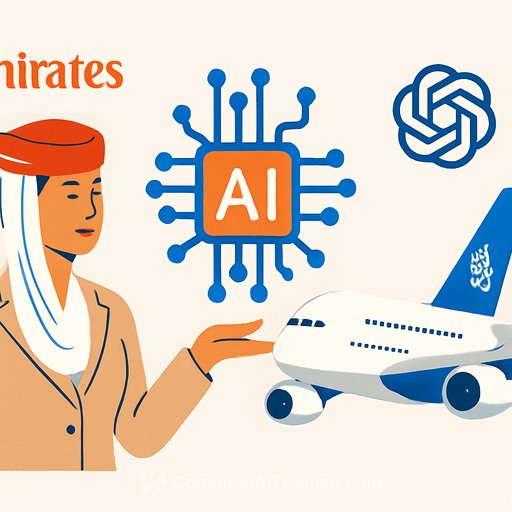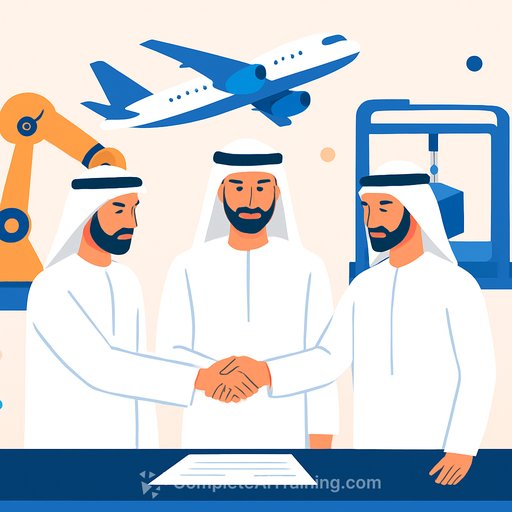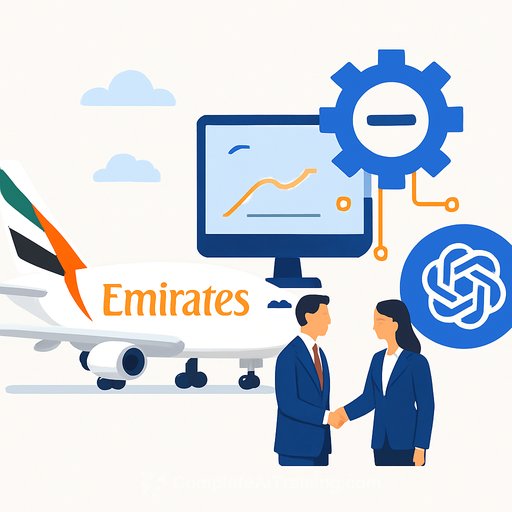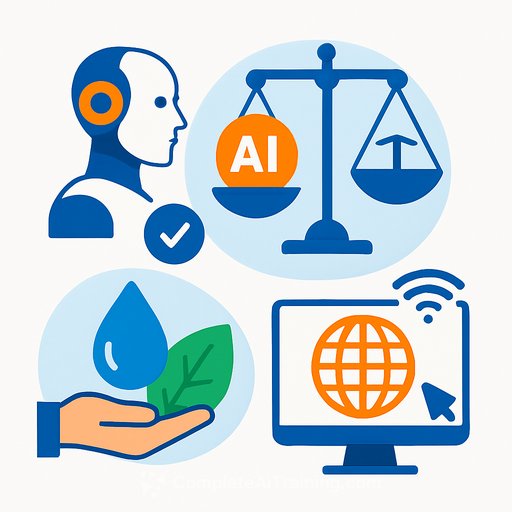Emirates to integrate AI across airline operations with OpenAI collaboration
Emirates Group has signed a memorandum of understanding with OpenAI to explore practical AI applications across its business. The plan includes rolling out ChatGPT Enterprise, building internal training programs, and setting governance that brings AI into operational, commercial, and customer-facing workflows.
The collaboration sets up an internal network of AI "champions" and an AI Centre of Excellence. Joint technology teams will build deployment frameworks and controlled testing environments so use cases can be proven before they scale.
Ali Serdar Yakut, Executive Vice President IT at Emirates, said the airline sees significant potential for AI to solve complex commercial problems, strengthen operations, and improve the customer experience. He added that working closely with OpenAI will help make investments strategic and scalable, creating durable value for employees and customers.
OpenAI's Rod Solaimani described Emirates' plan as a bold vision for how intelligence can be embedded across aviation. He said the goal is to equip teams with new tools and reimagine the travel experience for millions of customers.
What this means for operations leaders
This is a signal of focus: measurable outcomes over novelty. Expect a structured pipeline of use cases, a single governance model, and fast feedback loops from sandbox to production.
For operations, think fewer handoffs, cleaner decisions, and faster recovery during disruptions. The early priority will be automations that reduce delays, cut costs, and improve predictability.
Priority use cases to validate
- Predictive maintenance: component life forecasting, parts pooling, and smarter AOG responses.
- Fuel optimization: route, weight, and weather-informed planning with continuous recalculation.
- Crew planning: pairing, rostering, and day-of-ops recovery recommendations with compliance checks.
- Operations control: disruption playbooks, slot/gate coordination, and scenario testing in real time.
- Turnaround optimization: automated ground handling timelines, delay risk alerts, and milestone tracking.
- Customer operations: accurate, context-aware messaging for rebooking, irregular ops, and service recovery.
- Internal automation: document summaries, SOP search, and faster decision memos using ChatGPT Enterprise.
Guardrails and governance
Aviation has strict safety and regulatory requirements. Any AI that influences operational decisions needs human oversight, auditability, and certified interfaces with critical systems.
Reference frameworks from regulators and standard bodies can help shape your approach. For example, see the EASA AI Roadmap for direction on safety and assurance processes here.
- Model evaluation: define acceptance thresholds, bias checks, and operational reliability metrics.
- Human-in-the-loop: clear roles, escalation paths, and override rules for controllers, dispatch, and crews.
- Audit trails: log prompts, decisions, and outcomes for compliance and continuous improvement.
- Data controls: access boundaries, PII handling, and separation of safety-critical systems.
- Change management: SOP updates, recurrent training, and phased rollouts with rollback plans.
- Incident response: triggers, playbooks, and post-incident reviews specific to AI-enabled workflows.
Signals from the industry
Airlines are using AI to sharpen efficiency and reduce costs. Predictive maintenance, fuel planning, and automated scheduling are common starting points, while generative AI is being tested for customer interaction and internal process automation.
Some carriers are already seeing gains. American Airlines reports its Smart Gating tool has shortened taxi times by about 20% (roughly two minutes per flight) at DFW, cutting more than 11 hours of taxi time per day by automatically assigning arriving aircraft to the nearest available gate.
Elsewhere, AI-supported aircraft turnarounds are reducing turnaround times by roughly a quarter, and training programs are moving faster with AI-assisted coaching. Even so, most operators are taking a phased approach: prove value in support functions first, then progress to decision support in core operations.
Execution checklist for the next 90 days
- Stand up the AI Centre of Excellence and nominate AI champions in OCC, MRO, Ground Ops, and Customer Ops.
- Inventory data sources, quality, and access rules; map them to high-value use cases.
- Select 3-5 use cases with clear KPIs (e.g., OTP, block time variance, missed connections, gate holds).
- Launch secure sandboxes with synthetic/masked data; define go/no-go gates for production.
- Roll out ChatGPT Enterprise for internal knowledge retrieval, SOP support, and documentation workflows.
- Establish a governance board with Ops, Safety, IT, Legal, and Compliance to approve deployments.
- Integrate with existing systems (OCC tools, EFBs, MRO, and DCS) via APIs and strict access controls.
- Publish playbooks, training, and comms; include override rules and incident response steps.
Metrics that matter
- Operational: OTP, taxi-out/in time, turn time adherence, crew misconnects, controllable delay minutes.
- Maintenance: AOG duration, deferral rates, part availability SLA, unscheduled events per 1,000 FH.
- Commercial/Customer: rebooking time, NPS during IROPS, contact center handling time and accuracy.
- Productivity: hours saved per workflow, automation coverage, error rate reduction.
- Risk/Compliance: override frequency, audit completeness, model drift alerts, security incidents.
Skills and enablement
Upskill teams early so adoption sticks. Focus on prompt quality, data literacy, and operational use-case design, not just tools.
For structured programs by role, explore curated options here.
What to watch
- Explainability standards for safety-relevant systems and how they integrate with certification paths.
- Model drift and seasonal effects (peak travel, weather) that can degrade recommendations.
- Vendor security, data residency, and IP terms for enterprise-grade deployments.
- Proven ROI in production, not pilots: cost per minute saved, delay reduction, customer outcomes.
Emirates' move brings structure and scale to AI adoption across operations. The opportunity is clear: faster decisions, smoother days of operation, better recovery when plans break. The guardrails are just as clear: safety, explainability, and human oversight remain non-negotiable.
Your membership also unlocks:






